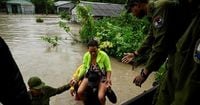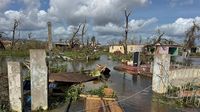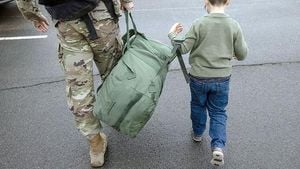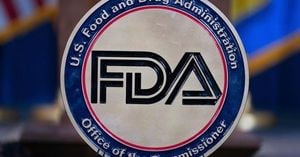In the early morning hours of October 28, 2025, Hurricane Melissa unleashed its fury on Jamaica, making landfall near New Hope, Westmoreland. With sustained winds clocking in at a staggering 185 miles per hour and a central pressure of 892mb, Melissa tied historical records for intensity and became the strongest hurricane ever to strike Jamaica, according to the National Hurricane Center. The storm’s arrival marked the beginning of a humanitarian and infrastructural crisis that would ripple across the Caribbean in the days that followed.
Before Melissa even touched Jamaican soil, its outer bands had already begun wreaking havoc on neighboring Haiti and the Dominican Republic. High winds and relentless rainfall battered both countries, setting the stage for catastrophic flooding and landslides. The slow-moving nature of the storm—at times crawling forward at just 1 mph—only magnified its destructive impact, a phenomenon well-documented by meteorologists. As Melissa hovered over the region, it dumped torrential rain, leading to widespread devastation and loss of life.
Jamaica bore the brunt of Melissa’s power. The hurricane made landfall in St. Elizabeth Parish at 12:30 ET as a Category 5 storm, just 25 miles southeast of the popular tourist destination Negril. The winds remained punishingly strong, maintaining 130 mph speeds as the storm cut across the island. By October 30, the scale of the disaster had become painfully clear: 1.5 million people were affected, 13,000 were sheltering in emergency accommodations, 72% of the island was without power, and only 35% of mobile phone service had been restored. In Black River, a town of about 5,000, the mayor described the situation bluntly to the BBC: “Catastrophic is a mild term.” Satellite imagery gathered by the BBC revealed entire neighborhoods submerged, roofs torn away, and vast swathes of land rendered unrecognizable.
Tragically, the storm claimed lives even before its official landfall. Three Jamaicans lost their lives while preparing for the hurricane. By October 31, officials reported 19 deaths, including a child, with search and rescue efforts still ongoing and the death toll expected to rise. The devastation in St. Elizabeth Parish was particularly acute, with buildings submerged and infrastructure in ruins.
Haiti, though spared a direct landfall, suffered immensely from Melissa’s outer bands. Catastrophic flooding killed at least 30 people, including 10 children, and left more than 20 missing. The town of Petit-Goave, home to 12,000 residents, was especially hard hit: the La Digue River overflowed, destroying 80 homes and damaging another 160. Approximately 15,000 Haitians sought refuge in 120 shelters, and Al Jazeera reported high river levels, destroyed water systems, power outages, and landslides throughout the country. In the Dominican Republic, at least two deaths were confirmed and 200 homes damaged, underscoring the storm’s far-reaching impact.
Melissa’s path did not end with Jamaica and Hispaniola. On October 29, the hurricane made landfall in Cuba near Playa Dos Rios as a Category 3 storm, still packing winds of 115 mph. The Cuban government, anticipating the worst, evacuated approximately 735,000 people ahead of landfall. The United Nations estimated that more than 3 million Cubans were exposed to life-threatening conditions. While no deaths were reported in Cuba, severe flooding and landslides left 240 communities isolated, complicating relief efforts.
As Melissa continued north, it battered the Bahamas, Turks and Caicos, and Bermuda with heavy rain, strong winds, and dangerous storm surges. Remarkably, Bermuda endured its second hurricane in October 2025, having already been struck by Hurricane Imelda earlier in the month. The Bahamas and neighboring islands saw significant flooding and infrastructure damage, though the storm had weakened to Category 2 by the time it passed through. The next potential landfall was projected for Newfoundland, Canada, though forecasts suggested the eye would likely remain offshore.
The financial and human costs of Hurricane Melissa are staggering. AccuWeather has estimated damages at approximately $50 billion, a figure that may rise as assessments continue. At least 50 people have died across the Caribbean, and many villages remain cut off from aid. CNN’s David Culver, reporting from Jamaica on October 31, described the harrowing scenes as residents attempted to return to what was left of their homes, navigating debris-strewn roads and facing uncertainty about the future.
Relief efforts have been complicated by the storm’s impact on transportation infrastructure. While aid is arriving at main airports, many regional airports remain inoperable, and damaged roads have made it nearly impossible to deliver supplies to remote communities. Until these routes are cleared, thousands will remain without access to food, water, and medical supplies. The Jamaican government has issued a detailed list of urgently needed relief items, including shelter materials, water purification supplies, hygiene kits, generators, and cleaning equipment. Aid organizations such as Good360 are coordinating shipments to ensure that supplies reach the right places at the right time.
Jamaica faces unique challenges in recovery, shaped by preexisting vulnerabilities. Despite recent improvements in poverty rates—thanks in part to an 85.7% increase in the national minimum wage—food insecurity remains widespread. The 2025 Caribbean Food Security and Livelihoods Survey found that 54% of Jamaican households were food insecure, with 39% having reduced food stocks. Melissa’s devastation of the agriculture and fishing sectors is expected to worsen this crisis, making local job creation and economic recovery all the more urgent.
The Caribbean Disaster Emergency Management Agency (CDEMA) is coordinating response efforts across affected countries, identifying gaps and deploying resources. Lessons from past disasters are being put into practice. Patty McIlreavy, CEO of the Center for Disaster Philanthropy, emphasized to donors, “Speed matters, but trust matters more. Quick relief without local ownership fades fast. Recovery is a marathon, not a sprint. Communities need flexible, long-term support.”
There is also a strong push for cash-based aid. With telecommunications and power outages common, digital banking and remittances have become lifelines for many Jamaicans. Remittances account for nearly a quarter of Jamaica’s GDP, with $3.3 to $3.5 billion USD sent annually, mostly from the United States. Experts and the Jamaican government both stress that monetary donations are the most effective way to help, as they allow for rapid, targeted support and empower families to make their own decisions about rebuilding.
As the Caribbean begins the long road to recovery, the lessons of Hurricane Melissa are clear: preparedness, partnership, and flexibility are crucial. The destruction wrought by this historic storm will take years, perhaps decades, to fully repair, but the resilience and determination of the region’s people—and the support of the global community—offer hope for the future.






